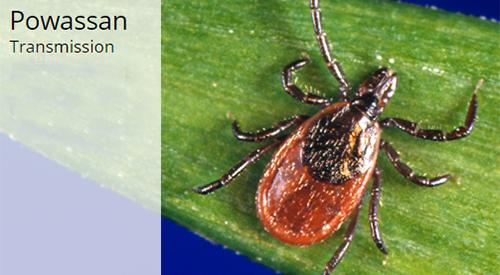CARMEL – Tick season has arrived. Pesky, small juvenile ticks, called “nymphs,” are most active from the middle of May to mid-August.
Putnam County Health Department officials reminded the public “it’s never too early to start thinking about how to best protect yourself since ticks live through the winter and can bite year-round.”
The health department has launched a new tick-dedicated webpage complete with easy-to understand videos in English and Spanish, along with advice from the county’s epidemiologist Dr. Alison Kaufman who detailed the three most common tick-borne illnesses, Lyme disease, Anaplasmosis and Babesiosis.
Dr. Kaufman, who previously worked at the Dutchess County Department of Behavioral and Community Health and developed a specialization in tick-borne illnesses, before moving to the New York State Department of Health the year before the start of the COVID pandemic noted, “Most cases of tick-borne disease occur from late spring to mid-summer when people spend more time outdoors and ticks are in their nymph stage of life. Then they are very small and easily go unnoticed. There are a lot of ticks in Putnam County, but there are several strategies people can use to reduce risk for tick bites and tick-borne disease. It’s also crucial to be familiar with potential symptoms to be able to recognize and seek treatment for disease early.”
The 15-minute video opens with a four-and-a-half-minute overview of tick-borne disease in Putnam and the U.S. It then delves into an examination of seven prevention strategies including: Know the high-risk season; avoid places where ticks live whenever possible; wear protective clothing; use repellents; check for ticks frequently; remove ticks quickly and correctly and recognize disease early to promptly visit a healthcare provider.
Putnam Commissioner of Health Dr. Michael Nesheiwat said another way to increase protection is to treat clothing and outdoor gear with permethrin, to ward off ticks, mosquitoes, and other insects. “Even in the summer, when it may be too uncomfortable to wear long pants and sleeves, wearing permethrin treated shoes and socks can significantly lower risk for tick bites. Permethrin can be purchased as a spray and applied to clothing at home. Once applied, it will last through a number of washings. Another option is to purchase clothing pre-treated with permethrin from a reputable source.”
Dr. Kaufman reminded the public when it comes to ticks, “Prevention is the best strategy. Avoid wooded and brushy areas with high grass and leaf litter where the most ticks are found. When venturing out, use EPA registered repellents. When returning home, examine and remove any ticks on one’s clothes, gear or pets.
The department also recommended taking a shower and conducting a full body tick check because the sooner an attached tick is removed the less likely it is to transmit disease.








